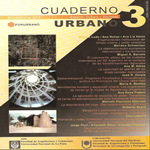La arquitectura del hoyo. Una lectura empírica del hoyo
DOI:
https://doi.org/10.30972/crn.331616Keywords:
teoría arquitectónicaAbstract
El texto busca entender el concepto del “hoyo” dentro de la teoría arquitectónica, rescatando a esta categoría del papel que juega dentro del discurso filosófico para regresarlo a la materialidad dentro de la teoría arquitectónica. La filosofía a tratado el estatus del hoyo como un problema teórico y siempre lo a confinado en términos de su negatividad y negación, dentro de los problemas de la nada. En este texto los argumento filosóficos concernientes con la “nada” son considerados solamente con la finalidad de ser transformados en conceptos positivos dentro de la teoría arquitectónica. Este ensayo se propone abrir el argumento para una discusión posterior. y presentar acercamientos hacia cuales podrían considerarse “hoyos” en el entorno físico. También analiza, brevemente, la cuestión empírica de los hoyos descritos por la arquitectura, mostrando que producen condiciones y efectos mucho más complejos de los que normalmente la arquitectura reconoce.Downloads
References
(1) Bedard, Jean-Francois (Ed.) (1994). Cities from Artificial Excavation: The Work of Peter Eisenman, 1978-1988, Canadian Centre for Architecture and Rizzoli International Publications, Montreal, Canadá.
(2) Casati, Robert & Achille C. Varzi (1994). Holes and other Superficialities, The MIT Press, Cambridge, Massachusetts.
(3) Celant, Germano (1997). Michael Heizer, Fondazione Prada, Milan, Italy.
(4) Celant, Germano (1999). Anish Kapoor, Fondazione Prada, Milan, Italy.
(5) Davidson, Cynthia C. (Ed.) (1991). Anyone, Anyone Corporation, Rizzoli International Publications, New York.
(6) Deleuze, Gilles & Guattari, Felix (1987). A Thousand Plateaus, University of Minneapolis Press (trans. Briam Massumi), Minneapolis.
(7) Diserens, Corinne (Ed.) (1993). Gordon Matta–Clark, IVAM Centre Julio Gonzalez, Valencia, Spain.
(8) Eisenman, Peter (1997). Processes of the Interstitial. El Croquis N.º 83, Madrid.
(9) Fontana, Lucio (1982). Lucio Fontana: el espacio como exploración, Dirección General de Bellas Artes, Archivos y Bibliotecas, Madrid, Spain.
(10) Gussin, Graham & Ele Carpenter (2001). Nothing, August Media Ltd and Northern Gallery for Contemporary Art, London.
(11) Hegel, G. W. F. (1975). Aesthetics, Lectures on Fine Art, Volume II, Clarendon–Oxford University Press, (trans. T. M. Knox), Oxford.
(12) Jacob, Mary Jane (1985). Gordon Matta–Clark: A Retrospective, Museum of Contemporary Art, Chicago, Ill.
(13) Kapoor, Anish (2000). Taratantara, Actar Publishers, Barcelona, Spain.
(14) Karmo, Toomas (1977). Disturbances, Analysis 37, pp. 147–148.
(15) Lee, Pamela M. (2000). Object to be destroyed the work of Gordon Matta–Clark, The MIT Press, Cambridge, Mass.
(16) Lewis, David K. & Stephanie R. Lewis (1983). Holes, Philosophical Papers, Volume 1, Oxford University Press, Oxford, pp. 3-9.
(17) Merleau–Ponty, Maurice (1962). Phenomenology of Perception. Humanities Press and Routledge & Kegan Paul (trans. Colin Smith), New York and London.
(18) Sartre, Jean-Paul (1958). Being and Nothingness, Routledge, London.
(19) Tazzi, Pier Luigi & Homi K. Bhabha (1998). Anish Kapoor, Hayward Gallery Publishing, London.
(20) Tiberghien, Gilles A. (1999). Land Art, The Princeton Architectural Press, New York.
Downloads
Published
Issue
Section
License
CUADERNO URBANO sustains its commitment to the Open Access policies for scientific information, on account of the fact that both scientific publications and public funded research must circulate freely on the Internet and without restrictions.
CUADERNO URBANO ratifies the Open Access model in which the contents of scientific publications are available in full text free of charge on the Internet, without temporary embargoes, and whose editorial production costs are not transferred to the authors. This policy proposes breaking down the economic barriers that generate inequities both in access to information and in the publication of research results.





.jpg)








